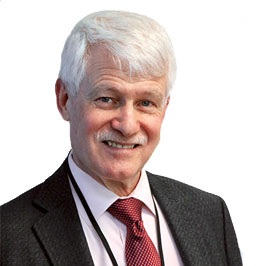
As a public health laboratory clinician scientist and not a traditional university professor, it is hard to summarize my lessons learned into typical academic pearls of wisdom. My career has spanned AIDS/HIV control, the discovery and cure of hepatitis C, and overseeing the BC Center for Disease Control (BCCDC) Public Health Laboratory’s COVID pandemic response with lots of diversions in between and more to come.
I started my career as a Microbiology and Immunology undergraduate followed by Medical School and Internal Medicine training at McGill University. I did subspecialty and research training in Infectious Diseases at Stanford University followed by Medical Microbiology training at the University of Toronto (UofT) which ultimately kindled my fascination with viruses. Training in multiple places exposes one to different systems, points of view, and spending time in so-called academic “meccas” makes you realize that each place has strengths and weaknesses and provide lessons to help chart your own academic path.
I was a medical resident at McGill in 1981 when I saw my first AIDS cases, only to start my Infectious Disease training in California in 1983 as the AIDS epidemic exploded. The causal virus, HIV, had not yet been discovered. Stigma and fear were everywhere and there was a disconnect between scientific evidence, and how people responded, even for people who by then should have understood the transmission epidemiology. After moving to Toronto three years later in 1986, I watched the same stigma and fear play out despite even more solid knowledge of the causal agent, HIV.
Over time I witnessed how multi-disciplinary research, industry, and therapeutics transformed HIV from a lethal infection, into a chronic controllable infection. Early detection, and now prophylaxis, prevents onward transmission, and yet the stigma remains, globally impacting those most vulnerable.
After my Medical Microbiology training at UofT, I spent almost a decade overseeing virology at Toronto General Hospital. It taught me about using laboratory tests to guide clinical practice, especially in transplantation. A colleague convinced me to bid on a contract to quantify hepatitis B DNA viral loads for a hybrid interferon trial. This experience landed me an even larger contract to assess the utility of the antiviral compound 3TC (lamivudine).
Co-ordinating multi-million-dollar national clinical trials was challenging but they provided access to cutting-edge technologies to quantify viral loads. We were the first in Canada to use branched chain technology to quantify hepatitis B responses to treatment.
Hepatitis C virus, discovered in 1989, became yet another virus to be overcome. In 1998, I was recruited to the BCCDC Public Health Laboratory to oversee its virology section. By 1998, there were already hints that hepatitis C could actually be cured, because unlike HIV, hepatitis C does not integrate into the host’s genome.
After arriving in BC, I continued my role in co-ordinating national clinical trials, in this case related to hepatitis C. I was also able to convince the BC Ministry of Health to fund an integrated hepatitis prevention, care, and treatment program which was base funded in 2000 for ~$5 million a year. Amongst other things these resources were used to support BC’s universal infant hepatitis B vaccination program that started in 2001 which led to a >95% reduction in acute hepatitis B cases in BC. It also enabled a 20-year effort to use laboratory test results to monitor hepatitis outcomes at an individual-level, and use “big data” i.e. linked laboratory and administrative data to measure outcomes at a population-level.
Together with Dr. Naveed Janjua, an outstanding epidemiologist colleague, and our multi-disciplinary team, the BC Hepatitis Testers Cohort of >1.7 million British Columbians was created. Using this cohort, we were able to quantify the impact of curative treatments, initially with interferons, and then with direct acting antivirals on population-level outcomes across the prevention, care, and treatment continuum.
While at BCCDC/UBC I have always strived to support other researchers to deliver cutting edge molecular and serologic testing. Examples include: the landmark BC Cervical Cancer Screening FOCAL trial; using pseudo-viruses to monitor HPV serological responses to assess 2 vs 3 HPV vaccine dose effectiveness; we were also the first province to use pooled nucleic acid testing for HIV to identify acute HIV infections during the window period as a tool to reduce onward HIV transmission; and, using PCR testing and genomics to better understand influenza vaccine effectiveness.
In 2016, I became the Medical Director of the Public Health Laboratory. At the time, I had no clue that during my tenure I would help lead the BCCDC Public Health Laboratory response to COVID-19, the worst pandemic in a century – it was an opportunity to draw on every facet of what I have learned. Using medical, clinical, scientific, technical and operational teamwork we were able deploy a SARS-CoV-2 PCR test within 10 days of the publication of the sequence; shared testing approaches with front-line testing laboratories; used whole genome sequencing to confirm that early infections were being introduced from the USA and Europe and not from China; studied serological responses to vaccines and infection including in antenatal women; evaluated a ton of point-of-care detection assays… and I was tapped to provide advice to various Federal advisory bodies throughout the pandemic.
One of the most important things we did early on was to intentionally integrate provincial SARS-CoV-2 testing data, genomics data and hospitalization data in near real time to support COVID-19 contact tracing during the early days of the pandemic as well as plan to integrate vaccine status in the hope that a successful vaccine would become available. Ultimately this created part of the provincial platform for monitoring SARS-CoV-2 outcomes and vaccine effectiveness in real time.
BC’s COVID-19 response was built on decades of overcoming challenges in creating cohorts with integrated laboratory and administrative data, forging collaborative multi-disciplinary partnerships, providing real-time data to support the office of the Provincial Health Officer and public health. This also displayed how a public health laboratory, as part of provincial laboratory network, can help protect British Columbians during this pandemic.